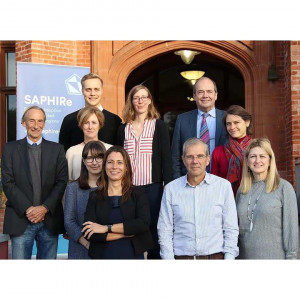 \
&
Contact us
\
&
Contact us
 \
&
Contact us
\
&
Contact us
Partnership website: https://www.clean-hydrogen.europa.eu/index_en
As an institutionalised public-private partnership, Clean Hydrogen Joint Undertaking (JU) brings together the European Commission (the public sector), Hydrogen Europe and Hydrogen Europe Research (representing the hydrogen industries and hydrogen research community respectively) so as to bring together as many relevant actors as possible across the whole clean hydrogen value chain. It considers all sectors of the economy, but especially the hard-to-abate ones like transport and heavy industry.
In support of the European Green Deal, the Clean Hydrogen JU aims to accelerate development and deployment of European clean hydrogen technologies, contributing to a sustainable, decarbonised and fully integrated energy system. It contributes to the European climate neutrality goal by producing noticeable, quantifiable results towards the development and scaling up of hydrogen applications. This will help develop a number of hydrogen technologies, which are currently either not competitive or have a low technology readiness level, but are expected to contribute to the 2030 energy and climate targets and most importantly make the goal possible of climate neutrality by 2050.
The EU will support the Clean Hydrogen JU with €1 billion euro for the period 2021-2027, complemented by at least an equivalent amount of private investment (from the private members of the partnership), raising the total budget to above €2 billion euro.
As an institutionalised partnership, Clean Hydrogen JU has its own work programmes.
Partnerships group the EC and private and/or public partners, to coordinate and streamline the research & innovation initiatives and funding in some selected key domains.

The Department of Economy, Science and Innovation of the Flemish government coordinates the Horizon 2020 Coordination and Support Action SAPHIRe, which started on 1 December 2018. The aim of the project is to secure the adoption of personalised medicine in all European regions, including sparsely populated and remote regions and regions with different innovation capacities.
The activities of SAPHIRe are complementary to the smart specialisation partnership on personalised medicine – S3P4PM, which is also coordinated by the Department of Economy, Science and Innovation.